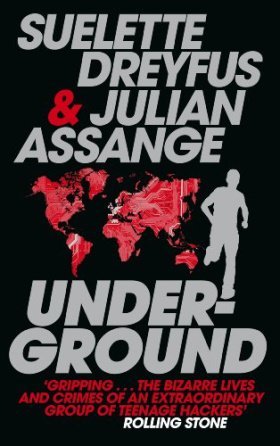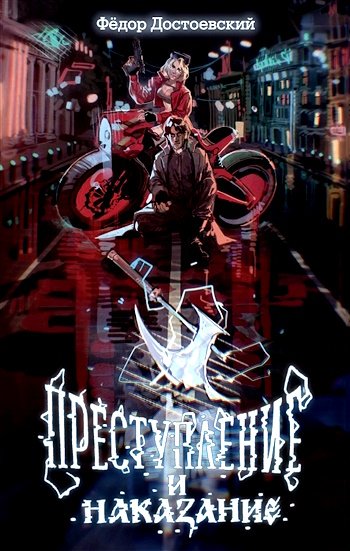Electron couldn't believe what he was hearing. He didn't need any fame—and he certainly didn't need to be busted. The conversation—like Phoenix himself—was really beginning to annoy him.
`Hey, and they know your name,' Phoenix said coyly.
That got a reaction. Electron gulped his anger.
`Haha! Just joshing!' Phoenix practically shouted. `Don't worry! They didn't really mention anyone's name.'
`Good,' Electron answered curtly. His irritation stewed quietly.
`So, do you reckon we'll make the cover of Time or Newsweek?'
Good grief! Didn't Phoenix ever give up? As if it wasn't enough to appear on the 6 o'clock national news in a country crawling with over-zealous law enforcement agencies. Or to make the New York Times. He had to have the weeklies too.
Phoenix was revelling in his own publicity. He felt like he was on top of the world, and he wanted to shout about it. Electron had felt the same wave of excitement from hacking many high-profile targets and matching wits with the best, but he was happy to stand on the peak by himself, or with people like Pad and Gandalf, and enjoy the view quietly. He was happy to know he had been the best on the frontier of a computer underground which was fresh, experimental and, most of all, international. He didn't need to call up newspaper reporters or gloat about it in Clifford Stoll's face.
`Well, what do you reckon?' Phoenix asked impatiently.
`No,' Electron answered.
`No? You don't think we will?' Phoenix sounded disappointed.
`No.'
`Well, I'll demand it!' Phoenix said laughing, `Fuck it, we want the cover of Newsweek, nothing less.' Then, more seriously, `I'm trying to work out what really big target would clinch it for us.'
`Yeah, OK, whatever,' Electron replied, distancing himself again.
But Electron was thinking, Phoenix, you are a fool. Didn't he see the warning signs? Pad's warning, all the busts in the US, reports that the Americans were hunting down the Brits. As a result of these news reports of which Phoenix was so proud, bosses across the world would be calling their computer managers into their offices and breathing down their necks about their own computer security.
The brazen hackers had deeply offended the computer security industry, spurring it into action. In the process, some in the industry had also seen an opportunity to raise its own public profile. The security experts had talked to the law enforcement agencies, who were now clearly sharing information across national borders and closing in fast. The conspirators in the global electronic village were at the point of maximum overreach.
`We could hack Spaf again,' Phoenix volunteered.
`The general public couldn't give a fuck about Eugene Spafford,' Electron said, trying to dampen Phoenix's bizarre enthusiasm. He was all for thumbing one's nose at authority, but this was not the way to do it.
`It'd be so funny in court, though. The lawyer would call Spaf and say, "So, Mr Spafford, is it true that you are a world-renowned computer security expert?" When he said, "Yes" I'd jump up and go, "I object, your honour, this guy doesn't know jackshit, 'cause I hacked his machine and it was a breeze!"'
`Mmm.'
`Hey, if we don't get busted in the next two weeks, it will be a miracle,' Phoenix continued happily.
`I hope not.'
`This is a lot of fun!' Phoenix shouted sarcastically. `We're gonna get busted! We're gonna get busted!'
Electron's jaw fell to the ground. Phoenix was mad. Only a lunatic would behave this way. Mumbling something about how tired he was, Electron said goodbye and hung up.
At 5.50 a.m. on 2 April 1990, Electron dragged himself out of bed and made his way to the bathroom. Part way through his visit, the light suddenly went out.
How strange. Electron opened his eyes wide in the early morning dimness. He returned to his bedroom and began putting on some jeans before going to investigate the problem.
Suddenly, two men in street clothes yanked his window open and jumped through into the room shouting, `GET DOWN ON THE FLOOR!'
Who were these people? Half-naked, Electron stood in the middle of his room, stunned and immobile. He had suspected the police might pay him a visit, but didn't they normally wear uniforms? Didn't they announce themselves?
The two men grabbed Electron, threw him face down onto the floor and pulled his arms behind his back. They jammed handcuffs on his wrists—hard—cutting his skin. Then someone kicked him in the stomach.
`Are there any firearms in the house?' one of the men asked.
Electron couldn't answer because he couldn't breathe. The kick had winded him. He felt someone pull him up from the floor and prop him in a chair. Lights went on everywhere and he could see six or seven people moving around in the hallway. They must have come into the house another way. The ones in the hallway were all wearing bibs with three large letters emblazoned across the front: AFP.
As Electron slowly gathered his wits, he realised why the cops had asked about firearms. He had once joked to Phoenix on the phone about how he was practising with his dad's .22 for when the feds came around. Obviously the feds had been tapping his phone.
While his father talked with one of the officers in the other room and read the warrant, Electron saw the police pack up his computer gear—worth some $3000—and carry it out of the house. The only thing they didn't discover was the modem. His father had become so expert at hiding it that not even the Australian Federal Police could find it.
Several other officers began searching Electron's bedroom, which was no small feat, given the state it was in. The floor was covered in a thick layer of junk. Half crumpled music band posters, lots of scribbled notes with passwords and NUAs, pens, T-shirts both clean and dirty, jeans, sneakers, accounting books, cassettes, magazines, the occasional dirty cup. By the time the police had sifted through it all the room was tidier than when they started.
As they moved into another room at the end of the raid, Electron bent down to pick up one of his posters which had fallen onto the floor. It was a Police Drug Identification Chart—a gift from a friend's father—and there, smack dab in the middle, was a genuine AFP footprint. Now it was a collector's item. Electron smiled to himself and carefully tucked the poster away.
When he went out to the living room, he saw a policemen holding a couple of shovels and he wanted to laugh again. Electron had also once told Phoenix that all his sensitive hacking disks were buried in the backyard. Now the police were going to dig it up in search of something which had been destroyed a few days before. It was too funny.
The police found little evidence of Electron's hacking at his house, but that didn't really matter. They already had almost everything they needed.
Later that morning, the police put the 20-year-old Electron into an unmarked car and drove him to the AFP's imposing-looking headquarters at 383 Latrobe Street for questioning.
In the afternoon, when Electron had a break from the endless questions, he walked out to the hallway. The boyish-faced Phoenix, aged eighteen, and fellow Realm member Nom, 21, were walking with police at the other end of the hall. They were too far apart to talk, but Electron smiled. Nom looked worried. Phoenix looked annoyed.
Electron was too intimidated to insist on having a lawyer. What was the point in asking for one anyway? It was clear the police had information they could only have obtained from tapping his phone. They also showed him logs taken from Melbourne University, which had been traced back to his phone. Electron figured the game was up, so he might as well tell them the whole story—or at least as much of it as he had told Phoenix on the phone.

























